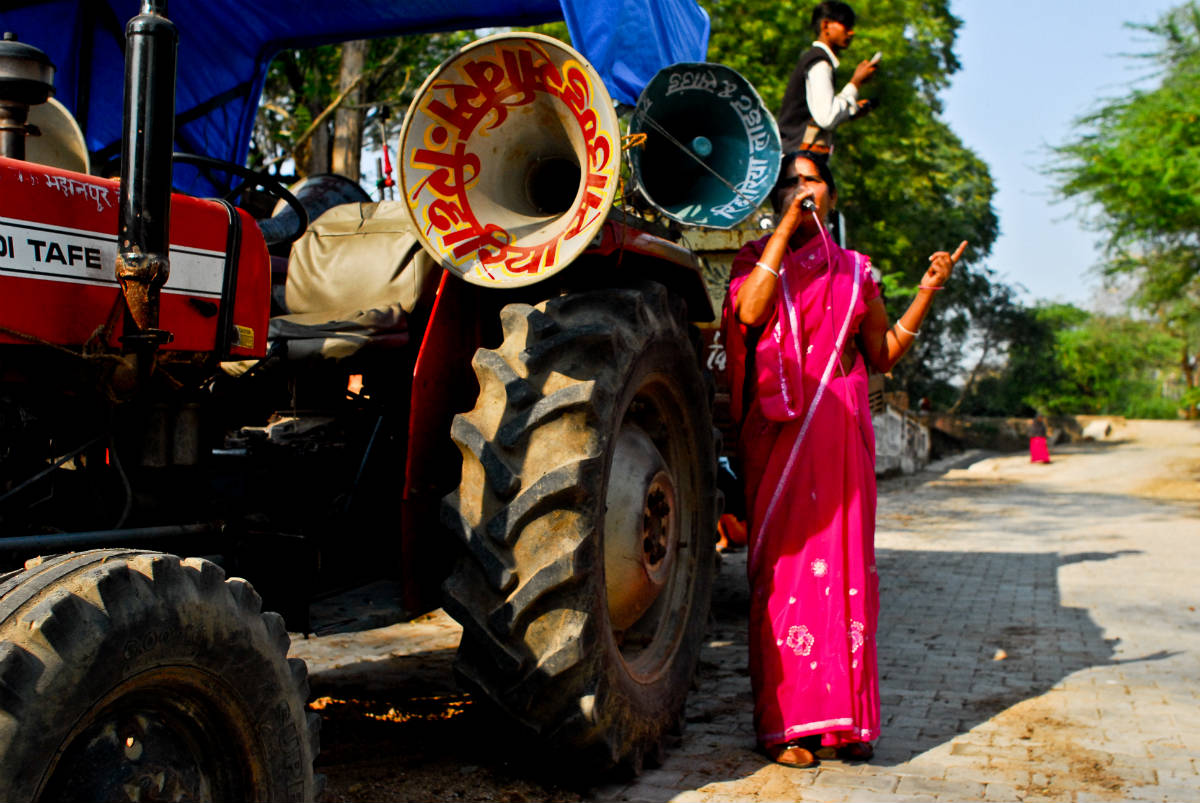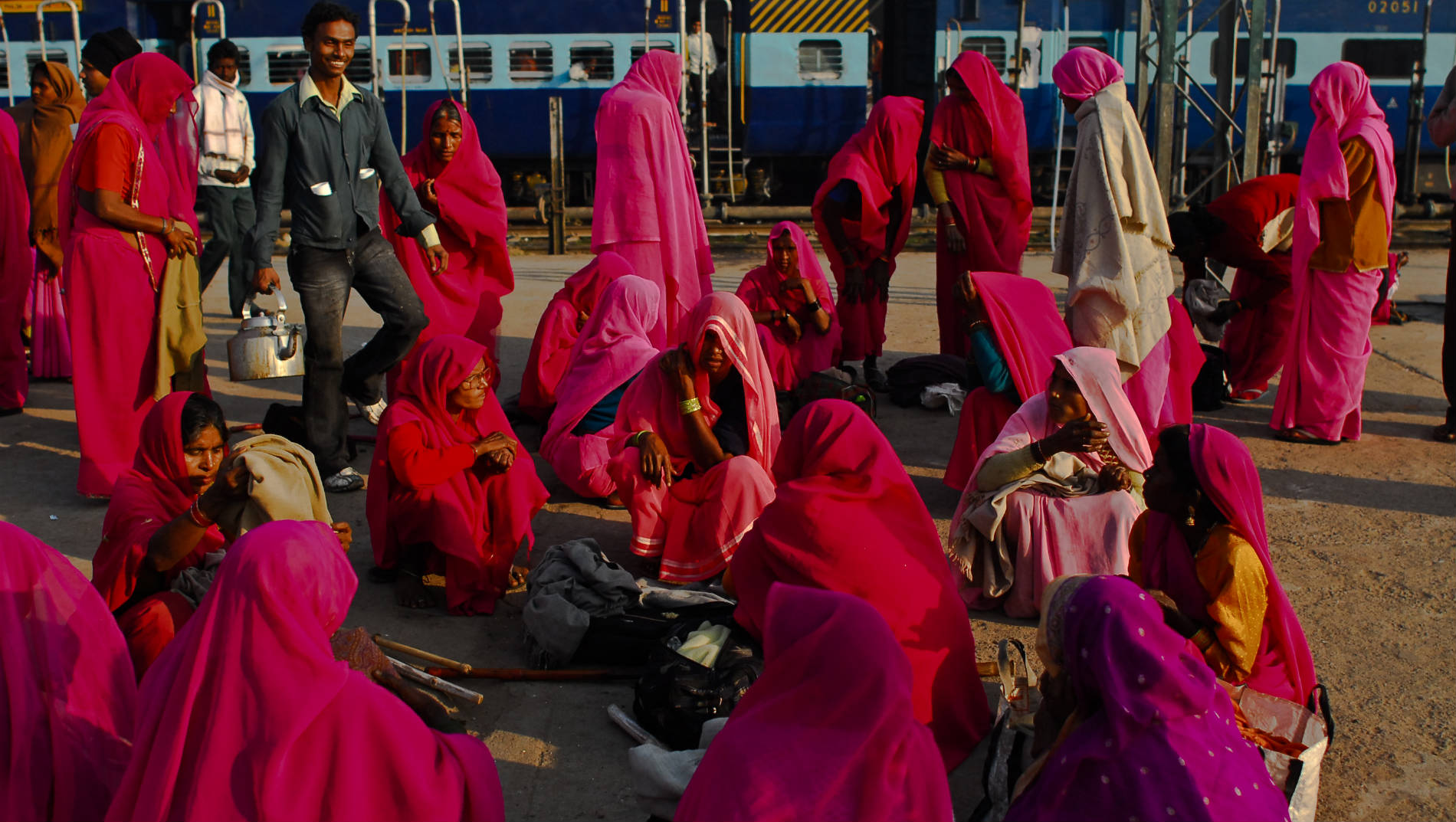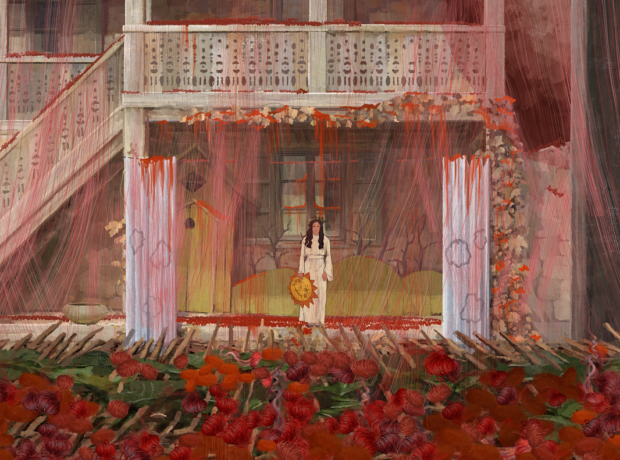It was a swelteringly hot day in May 2008 when the power was cut. In several neighbourhoods of Atarra, a small town located in the North Indian state of Uttar Pradesh, residents relied on candle-light by night and hand-held fans by day to survive without electricity for more than a fortnight. According to an article by the Guardian, the electricity office was sending fraudulent bills to customers for power they had never received.
In India, where corruption is endemic, traditional recourse to justice is either slow or ineffective or inaccessible, so there were few remedies available to the people of Atarra. This was why one local women’s group, known as the Gulabi Gang, orchestrated a gherao, or ‘encirclement’, to address the problem.
One of the most distinctive elements of India’s protest culture is the gherao, which became a household name after 1969, when it was promoted as a means of industrial action by West Bengal’s Labour Minister, Subodh Banerjee. It is as exactly as it sounds. Disgruntled citizens – they can be factory workers, land labourers or students – ring themselves around a building where government officials or employers are located and refuse to let them leave until their demands have been met. Indian newspapers report frequent occurrences of gheraos across the country, which are no longer limited to union-led action in labour disputes. Everywhere from the Prime Minister’s residence to the Taj Mahal has been targeted for gheraos and they have been carried out by people as diverse as schoolgirls (who gheraoed a principal for 20 hours after claiming they were deliberately given a ‘fail’ in an examination) to Indian National Congress Party politicians who attempted to gherao the legislative assembly in the state of Uttar Pradesh.
The gherao in Atarra took place two years after Sampat Pal founded the Gulabi Gang, or ‘Pink Gang’, in January 2006. Pal, an illiterate woman who bore the first of her five children at the age of 15, led 400 women wearing pink sari uniforms and carrying pink-painted bamboo sticks to the electricity office. When they arrived, the women swiftly seized padlocks, bolting and locking in the officials. They refused to let the men leave the building until power was once again restored. It worked.

Photo by lecercle
Blindboys.org Blog Post – Gulabi Gang
The Pink Gang, which has mushroomed to an estimated 20,000 female members since then, has often been likened to a vigilante organisation. At first glance, this classification seems appropriate. The armed women wage a campaign against wife-beaters, corrupt politicians and crooked police and often appear to be taking the law into their own hands. Describing her approach in a 2012 interview, Pal said: ‘For dishonest officers we have the stick in our hands. The officers who provide justice are our brothers. If he does work we will talk, otherwise we will beat him with shoes.’ That said, placing the Pink Gang in the context of the gherao does more to reveal the nature of their protests than the generic term vigilantism.
There is a long history of Indian women using the gherao tactic, despite them not being part of the factory unions where the gherao first was used on a mass-scale. Gandhi is credited with including women in politics by encouraging them to participate in satyagraha, a non-violent form of protest that did not challenge traditional notions of femininity. Once women participated in these Gandhian protests, it was not long before they moved on to more aggressive forms of protest, like the gherao, and appropriated these for their own purposes.
In the 1970s, women across the country were organising gheraos against mounting prices for food, kerosene and cooking oil. These gheraos were acceptable to men as they expressed the motherly frustration of women who were not able to provide meals for their family. In 1973, for example, 10,000 women in Mumbai orchestrated a gherao on the Aarey Milk Colony, a company that they accused of selling poor quality milk at unfair prices. The fact that they were armed with rolling-pins – a housewife’s weapon – and demanding milk for their children gave the gherao a perceived feminine look. Since then, women have gheraoed for justice on issues such as rape, dowry and corruption and some political scientists have even gone as far as to say that Indian women are ‘at the frontlines of encirclement’.
women have gheraoed for justice on issues such as rape, dowry and corruption and some political scientists have even gone as far as to say that Indian women are ‘at the frontlines of encirclement’.
While women have traditionally employed a non-violent form of the gherao akin to a ‘sit-in’, the Pink Gang has, at times, been feistier in their use of the tactic. In August 2006, for example, the women took over a police station in the town of Badausa, where a man called Bare Lal was being held incommunicado for several days without being charged with any crime. The Gang arrived at the police station with sticks and ropes, attempting to tie-up the Sub-inspector, a man called Sangham Lal. They threatened to leave only once Bare Lal was either charged or released. The police freed Bare Lal that day and a case was registered against Pal and two other Pink Gang members, who were each charged with 11 crimes, including rioting, obstructing a public servant in discharge of public functions and criminal intimidation. Pal and one other member ended up spending one night in jail a year later.
While this is an extreme example of the Pink Gang clashing with the police, they often end up collaborating with officers to some degree. In 2006, for example, the women uncovered a local criminal network involved in stealing government food rations, intended for the poorest members of society, and then selling off the grain on the black market. The scam is widespread. Indeed, Bloomberg estimated that it cost the state of Uttar Pradesh $ 14.5 billion in stolen food over the past decade. When the Pink Gang discovered that a local official was storing government food rations in his house, they surrounded his home so that he could not flee and called the police to investigate the matter (a previous suspect had been let go in similar circumstances, so the Pink Gang refused to end the gherao until the man was arrested and the grain seized as evidence).
Whether or not the Pink Gang’s use of the gherao constitutes vigilantism or not is, to some, irrelevant. For them, the gherao has no place in a democracy. A gherao is a ‘reprehensible technique’ said J.C Johari, an Indian political scientist, in his book Comparative Politics. ‘Gherao is not merely one crime, it is a bundle of crimes involving criminal trespass, wrongful restraint, and confinement and a host of other wrongs punishable under the penal law of a country,’ he said, adding ‘Nothing but the storehouse of ruination – moral, mental, political, economic, social, cultural and psychological – is the net result.’
For the Pink Gang, the net results of gheraos are justice and empowerment. In the case of a young woman who was locked-up after accusing a politician of rape, Pal recalled how she and the gang surrounded the office of the Deputy Inspector General in the town of Banda. ‘The DIG confined himself to the office. The DIG deployed force to restrain us from damaging property. The DIG was so scared that he hid himself. Then his staff told us that the DIG was not there, he has disappeared… We spat on his walls in front of the media. We did all this to embarrass him. Next day, she was released,’ Pal says. ‘We were determined to get her free’ she said, adding ‘until then our agitation would continue.’
Photo by lecercle![]()
![]()
![]()




